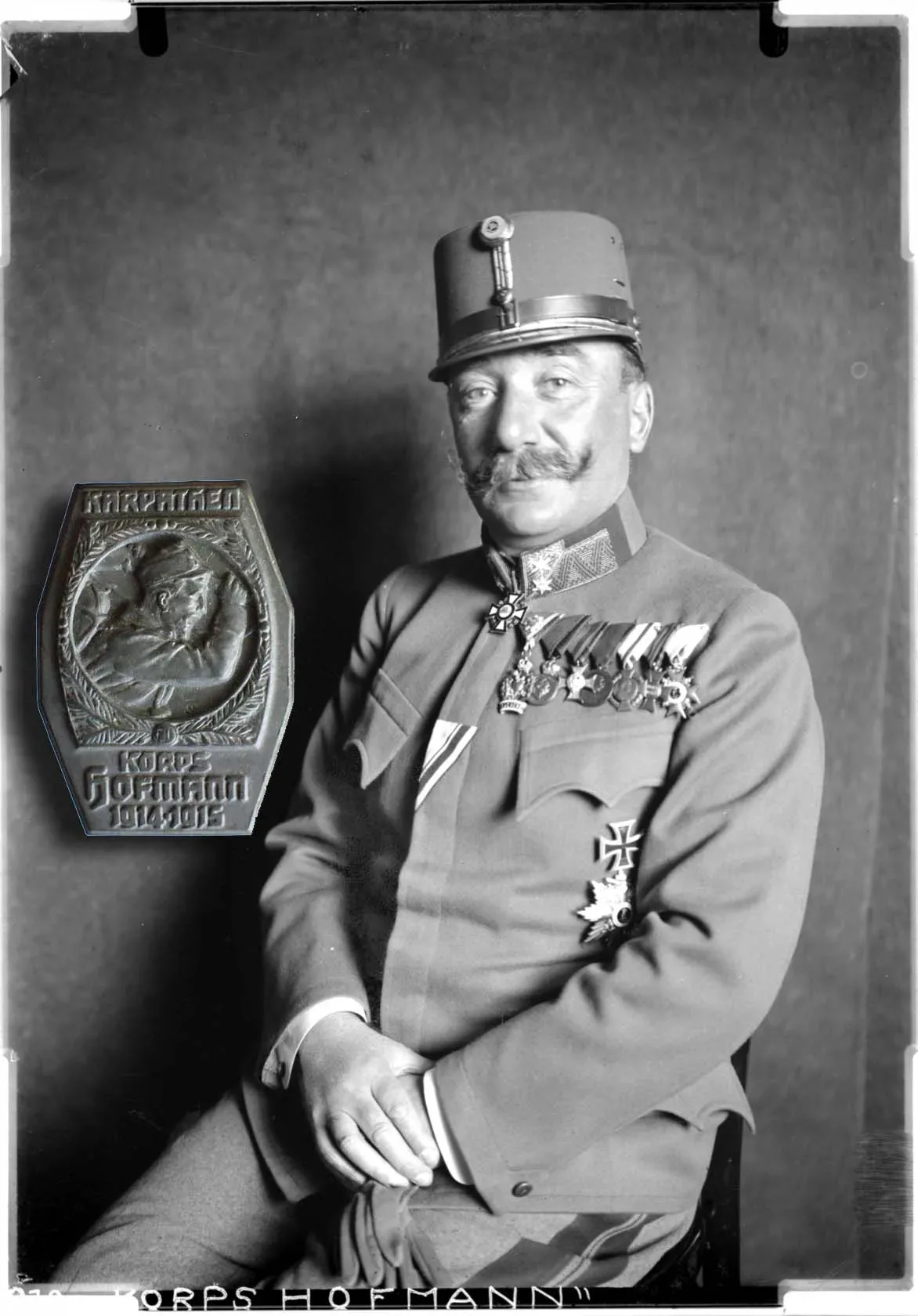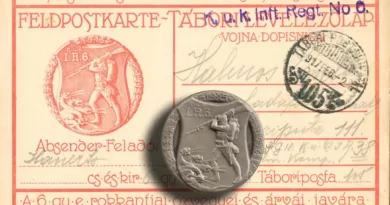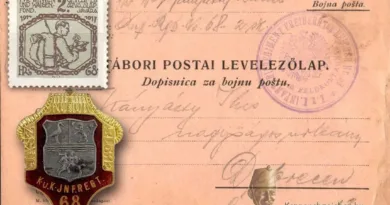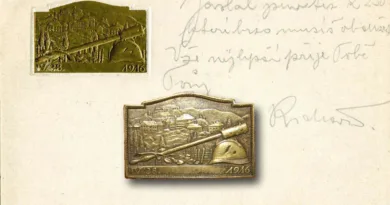Peter Hofmann infantry general
Peter Hofmann was born in Vienna in 1865. He graduated from the Theresianum military school in Wiener Neustadt in 1884. He was appointed staff officer in 1889 and sent to the Ministry of War. In 1911 he was promoted Major General and became Brigade commander. At the beginning of the Great War, in the winter of 1914/15, he was sent to Munkács to organize the defense of the Carpathians in the northeast. He became commander of the 55th Division that he organized. The backbone of the division were the 129th and 130 brigades. Their staff included various march battalions and insurgent infantry units. Later, the 308th, 309th and 310th Honvéd Infantry Regiments were formed from these units. They were complemented by the 103rd Infantry Regiment to reach the strength of an infantry division. This formation was strengthened by the Bolzano Brigade and the 131st Brigade from the summer of 1915 (the 54th infantry division). It was then named after the commander’s name as the Hofmann Corps. The Corps was given a military number in February 1917. That’s how the XXV. Corps was formed. In the second half of the war, the 54th Rifle Division and the 55th Division (later numbered 155th Division) were a permanent element in the composition.


The troops led by Hofmann fought successfully in the 1914-15 defense battles in the Carpathians. They cleaned the Uzsok Pass from the Russian troops that broke in there. From November 1, 1914, Hofmann was promoted to Lieutenant General. His corps was successful in the great offensive of May-June 1915. In 1917, Hofmann was awarded the Knight’s Cross of the Military Maria-Theresa Order for the defense of the Uzsoki Pass. He was also awarded a knighthood. In February 1918, he was promoted to infantry general. He retired on January 1, 1919 and died in 1923.

The memories of the Hofmann Corps are quite common in Hungary. In addition to the badge of the XXV. Corps, there was also a former Korps Hofmann badge commemorating the struggles in the Carpathians. This badge was manufactured in three sizes and three material variants by the Gurschner company in Vienna. A lot of post cards used the motif of this badge. There is also a striking number of photos of soldiers wearing the badge. Unfortunately, the general’s portrait was not depicted by any of the badge designers.





[…] of Eastern Galicia and Bukovina. I already wrote about the commander of the corps in more detail here. The image of the badge appears in many places, and many copies are still in collections today. It […]